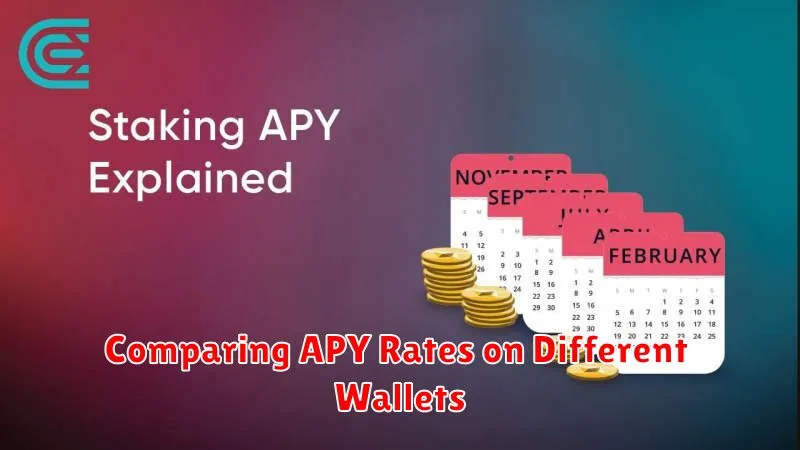Are you looking to generate passive income and diversify your investment portfolio? Learn how to leverage the power of crypto wallets for staking and unlock the potential of earning rewards on your cryptocurrency holdings. This comprehensive guide will walk you through the process of choosing the right wallet, understanding different staking mechanisms, and maximizing your returns while minimizing risk. Discover how crypto staking can be a simple yet effective strategy for building long-term wealth through passive income generation.
What is Crypto Staking?

Crypto staking is a process of locking up your cryptocurrencies to support the security and operations of a blockchain network, specifically those using a proof-of-stake (PoS) consensus mechanism.
Unlike proof-of-work (PoW) systems like Bitcoin, which rely on energy-intensive mining, PoS networks reward users for locking up their coins. This “staking” helps validate transactions and maintain the network’s integrity.
In return for staking your crypto assets, you earn rewards in the form of newly minted coins or transaction fees. The amount of reward varies depending on the specific cryptocurrency and the network’s rules.
Staking requires a compatible crypto wallet, usually one that supports the specific blockchain you want to stake on. You’ll need a minimum amount of cryptocurrency, known as the minimum stake, to participate.
Best Wallets for Staking in 2025

Predicting the best wallets for staking in 2025 is challenging due to the rapidly evolving cryptocurrency landscape. However, several factors will likely continue to influence the top choices. Security, user-friendliness, supported coins, and staking rewards will remain key considerations.
Wallets offering robust security features like multi-signature support and hardware integration will be highly sought after. Ease of use, particularly for beginners, will also be crucial. The range of supported cryptocurrencies for staking will influence the wallet’s appeal, with support for both major and niche coins being advantageous. Finally, the offered Annual Percentage Yield (APY) will be a primary factor in selecting a wallet.
While specific wallet names are difficult to definitively predict for 2025, look for wallets that consistently prioritize these key features. Researching user reviews and comparing features across leading platforms will be essential in making an informed decision.
Keep in mind that the cryptocurrency market is dynamic; thorough due diligence is vital before choosing a staking wallet. Always consider the reputation and track record of the wallet provider.
How to Stake Crypto Using a Wallet

Staking cryptocurrency allows you to earn passive income by locking up your coins to support the security and operations of a blockchain network. The process varies slightly depending on the specific cryptocurrency and wallet you’re using, but generally involves these steps:
1. Choose a compatible wallet: Not all wallets support staking. Ensure your chosen wallet explicitly offers staking functionality for your selected cryptocurrency. Look for wallets specifically designed for staking or those that integrate with staking pools.
2. Select a staking pool (if applicable): Many cryptocurrencies utilize staking pools, which combine the resources of multiple stakers to increase the chances of earning rewards. Research reputable pools before joining.
3. Transfer your crypto: Send the desired amount of cryptocurrency to your staking wallet address. Note that minimum staking amounts often apply.
4. Initiate staking: Within your wallet, locate the staking feature and follow the on-screen prompts to begin the process. This usually involves delegating your coins to a validator or pool.
5. Monitor your rewards: Once staking is active, regularly check your wallet to track your accumulated rewards. The frequency of reward distribution varies depending on the cryptocurrency and network.
Important Considerations: Always research the specific requirements and risks associated with staking your chosen cryptocurrency. Understand the lock-up periods (the time your funds are locked), potential penalties for early withdrawal, and the security of the wallet and staking pool you choose.
Comparing APY Rates on Different Wallets

APY (Annual Percentage Yield) rates vary significantly across different cryptocurrency wallets. This is largely due to several factors including the specific crypto asset being staked, the wallet provider’s operational costs, and the demand for staking services. Before choosing a wallet for staking, carefully compare the APY offered on your desired cryptocurrency across various platforms.
Some wallets offer higher APYs for locking up your assets for longer periods. Others might incentivize staking through rewards programs or tiered systems based on the amount staked. Always examine the terms and conditions to fully understand any associated fees or limitations.
Centralized exchanges (CEXs) often provide competitive APYs but carry the inherent risk associated with custodial services. Decentralized wallets (DeFi protocols) might offer higher APYs in some instances, but they require a higher level of technical understanding and may involve greater security risks. The optimal choice hinges on your risk tolerance and technical expertise.
It’s crucial to research the reputation and security track record of any wallet before entrusting your crypto assets to them. Compare APYs not only in terms of numerical value but also in the context of the overall security and trustworthiness of the platform.
Risks and Benefits of Crypto Staking

Crypto staking offers a potential avenue for passive income by locking up your cryptocurrency to support a blockchain’s operations. In return, you receive rewards, typically in the form of newly minted tokens or transaction fees. However, it’s crucial to understand both the potential benefits and inherent risks.
Benefits include the generation of passive income, contributing to the security and decentralization of the network, and potentially accessing exclusive features or governance rights depending on the specific blockchain and staking mechanism.
Risks are equally significant. Impermanent loss can occur with liquidity pool staking, where the value of your staked assets changes relative to each other. There’s also the risk of smart contract vulnerabilities leading to the loss of your staked assets. Further, validator slashing (penalties for misbehavior) on some Proof-of-Stake blockchains can reduce your rewards or even result in asset confiscation. Lastly, the volatility of the cryptocurrency market itself presents a significant risk, regardless of staking rewards.
It’s essential to thoroughly research the specific cryptocurrency and staking platform before committing your assets. Consider factors like the platform’s reputation, security measures, reward rates, and the overall health of the blockchain network.
How to Claim and Reinvest Staking Rewards

The process of claiming and reinvesting staking rewards varies slightly depending on the specific cryptocurrency and wallet you’re using. However, the general steps are similar. First, you need to locate the “Claim Rewards” or similar button within your chosen staking wallet’s interface. This button is usually found on the screen displaying your staking balance.
Once you click this button, the wallet will process the transaction, transferring your accumulated staking rewards to your main wallet balance. This process might take a few minutes to several hours, depending on network congestion. After the rewards are successfully claimed, you’ll need to re-stake those rewards. This usually involves navigating back to the staking section of your wallet and selecting the amount of your newly claimed rewards you wish to stake. Confirm the transaction, and your rewards are then automatically added to your existing stake, continuing to generate passive income.
Important Note: Always double-check the transaction fees before claiming and reinvesting your rewards. Some wallets charge a small fee for each transaction. It’s also crucial to ensure the security of your wallet by using strong passwords and enabling two-factor authentication where available. Remember to research the specifics of claiming and reinvesting rewards for your chosen cryptocurrency and wallet before proceeding.

